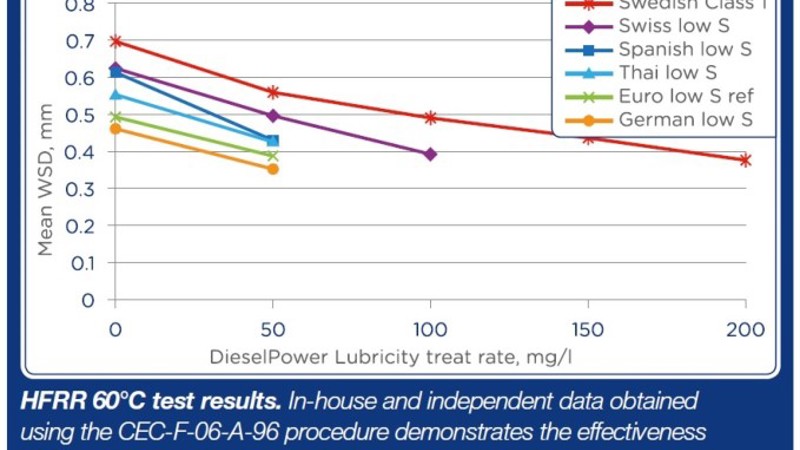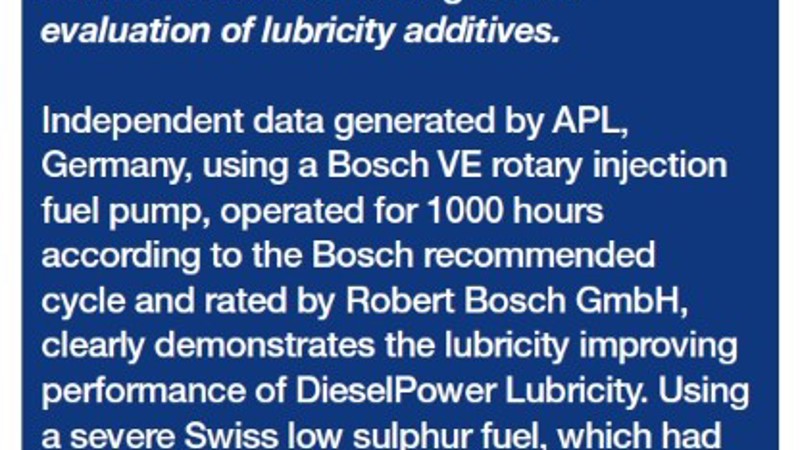
White Paper: Distillate Fuel Oil Treatment
Low sulphur solutions, fresh propulsion problems
Distillates, such as Marine Gas Oil (MGO) are arguably the most convenient low sulphur solution for existing ECA bound vessels. As, unlike abatement technologies or LNG power, they require no major up-front investment nor costly modification or retrofitting of the vessel. So what’s the problem?
On paper there isn’t one, as just like less expensive residual fuels, distillates need to meet the owners’ pre-determined specifications and the latest ISO 8217: 2012 standards. Unfortunately though, issues have a habit of showing themselves in the engine room, rather than a meeting room, and what looked good on a spec sheet may in fact end up blocking fuel lines, damaging fuel pumps and injectors and even contribute to the loss of engine power (LOP). As just a quick glance at the US Coast Guard’s 2014 statistics for loss of propulsion incidents in California will illustrate a worrying trend. Of the 93 LOP incidents, 15 were directly related to fuel switchovers. We wait anxiously for the figures from the freshly regulated European ECAs.
But, before you reach for that exhaust gas cleaner spec sheet, the problems, which can occur when using distillate fuels, can easily be avoided with a little help, according to Jonas Ostlund, Product Marketing Manager Marine Chemicals, Wilhelmsen Ships Service (WSS). “If you are aware of the fuel’s basic properties and limitations, and are prepared to treat your distillates systematically in order to manage and maximise their performance, they pose few challenges,” says Ostlund.
Typically, issues with distillate fuels are distinct from those of their residual relations, and they revolve around lubricity and degradation.
New fuel, new issues
Both the makeup of the source crude oil, and the refining processes that oil undergoes, can have an impact on the lubricity of any finished distillate fuel. This is because the lubricity enhancing compounds that are naturally present in all diesel fuels are also affected by the refinery process. The hydro treating refining process reduces the sulphur and aromatic content of crude, but it also removes the polar components that aid lubrication. This is the reason the lubricity of distillate fuels is difficult to predict, as it is not solely related to the sulphur level. Nevertheless, the general trend is that there are lower levels of lubricity in unfinished low sulphur distillate fuels than intermediate or heavy fuel oil. Rapidly increasing the wear of fuel and injector pumps at best, and causing the potentially catastrophic loss of power at worst, the effects of poor lubricity in low sulphur diesel fuels was well documented during their adoption by the car industry in the early 90s. It was a disaster, and it is one we don’t want to recreate at sea. An accepted limitation of low sulphur distillates, minimum lubricity levels now feature in the latest ISO 8217:2010 marine distillate fuel specifications.
A requirement for marine distillate fuels with a sulphur level of less than 500 ppm (0.05%) the ISO 8217:2012 WSD limit is currently fixed at 520μm. Typically, finished, on-spec, low sulphur distillate fuels will dip within this limit with the help of lubricity-improving additives. But, from that point on it then comes down to how the fuel is managed, manipulated or maintained prior to its arrival alongside your vessels for bunkering. Familiar questions come into play here regarding fuel quality, the consistent availability of on-spec fuel, and of course cost. Ostlund believes this uncertainty regarding distillates is easily eliminated. “For many customers working within the constraints of the 0.1% ECA sulphur cap this added complexity is totally unwanted and unnecessary, and instead they are choosing to fall back on additional fuel treatments”.
WSS has focused on developing a condensed range of marine distillate-specific, fuel oil treatment products. Released towards the end of 2014 in anticipation of the regulatory changes concerning emissions, WSS’ range has proved to be an almost instant hit with customers and Ostlund believes the reason is simple. “Using tried and tested, proven products such as DieselPower Lubricity from WSS as a matter of course, will significantly improve the lubricity of low sulphur distillate fuel, reducing component wear”. Typically requiring a dosage of 15ltr per 100mt its effectiveness is documented in independent HFRR, SOBOCLE and additional pump rig tests.

Limited shelf life
Low sulphur diesels tend to be more stable than high sulphur fuels as hydro treating typically destroys the precursors to insoluble organic particulates. However, along with lubricating compounds, hydro treating also eliminates naturally occurring antioxidants. It is why refineries treat distillate fuels with stabilisers to prevent deterioration and the formation of peroxides, the forerunners to soluble gums. Unfortunately, such additives actually have a limited shelf life and six months down the line the fuel, now being pumped aboard and into your storage tanks, is unprotected from deterioration.
A mixture of different hydrocarbons that can deteriorate over time, temperature, the availability of an oxygen supply, and access to sunlight also play an important role in accelerating the fuel’s decline. Experiencing a change in colour along with gum and sediment formation, a distillate fuel that is undergoing degradation through reactions with oxygen will, if unchecked, tend to go on to form deposits, especially on the fuel injectors. The reason the deposits end up on the fuel injectors is that when a degrading fuel leaves the injector to be atomised it tends to coke on the nozzle. The coaking starts to build and the spray pattern from the injection nozzle is affected reducing fuel economy and engine durability and actually increasing emissions.
Working in tandem with lubricity issues to make an already awkward situation, even more difficult, distillate fuel deterioration can also be addressed with additives. Treatments such as WSS’ DieselPower Enhancer are multifunctional, maintaining both fuel stability and improving lubricity. With a recommended dosage of 3ltr per 100mt, usage of such fill and forget, do it all products ensure that ongoing concerns regarding the differing lubricity and stability of low sulphur distillate fuels should disappear.
A familiar water based issue
In addition to distillate fuels’ unique lubricity and degradation issues, unfortunately they’re also prone to suffering from a problem shared by all diesel fuels, microbiological contamination. Thriving in hot and humid conditions and if non-dissolved water is present in the fuel, just 100ppm (0,0001%) of water is all that’s required for bacteria to grow in a fuel system. Microbes in small quantities pose few problems, however if their numbers increase (>106 cfu/ml; CFU – colony forming units) then they start to form biofilms in the systems, leading to sludge formation. Once established microbial growth will start to block filters, corrode tanks and even wear injectors.
Simple tasks such as regularly draining water from the bottom of tank, along with frequent, and at the very least annual, fuel testing, can help reduce the impact of microbes. However, the routine use of additional fuel treatments may be the only consistent solution to persistent microbial contamination.
While Biocides have been around for many years, products such as WSS’ DieselPower MAR 71 are specifically designed to work within distillates’ distinct parameters. Eliminating the potentially corrosive microbes often found within diesel fuel systems, when pro-actively used as preventative measure, the typical dosage is 20lt per 100mt.

Additives officially join the party
Experiencing an obvious surge in interest, linked to the upswing in ECA-driven MGO use, fuel treatments have historically though been greeted with an element of scepticism, frequently viewed as ‘snake oil’.
However, when it comes to lubricity improving products and stabilising agents, such as DieselPower Lubricity and DieselPower Enhancer, the results speak for themselves, and so seemingly do the owners.
A recent development, it seems that the fine detail of an increasing number of Charter Party agreements are being amended to stipulate the systematic use of such products, reflecting both their effectiveness and importance. That is of course an easy decision for owners and operators to make, when they are not the ones footing the fuel bill. But, the costs of maintaining a structured fuel treatment regime are insignificant when measured against the sizeable financial penalties which could be incurred as a result of engine damage, reduced fuel economy or even a LOP incident.
An established technology and the direct result of the car industry’s experiences with low sulphur diesel fuels, fuel treatment, along with ECAs, and the use of distillates, is here to stay.

Learn more about Distillate Fuel Oil Treatment products